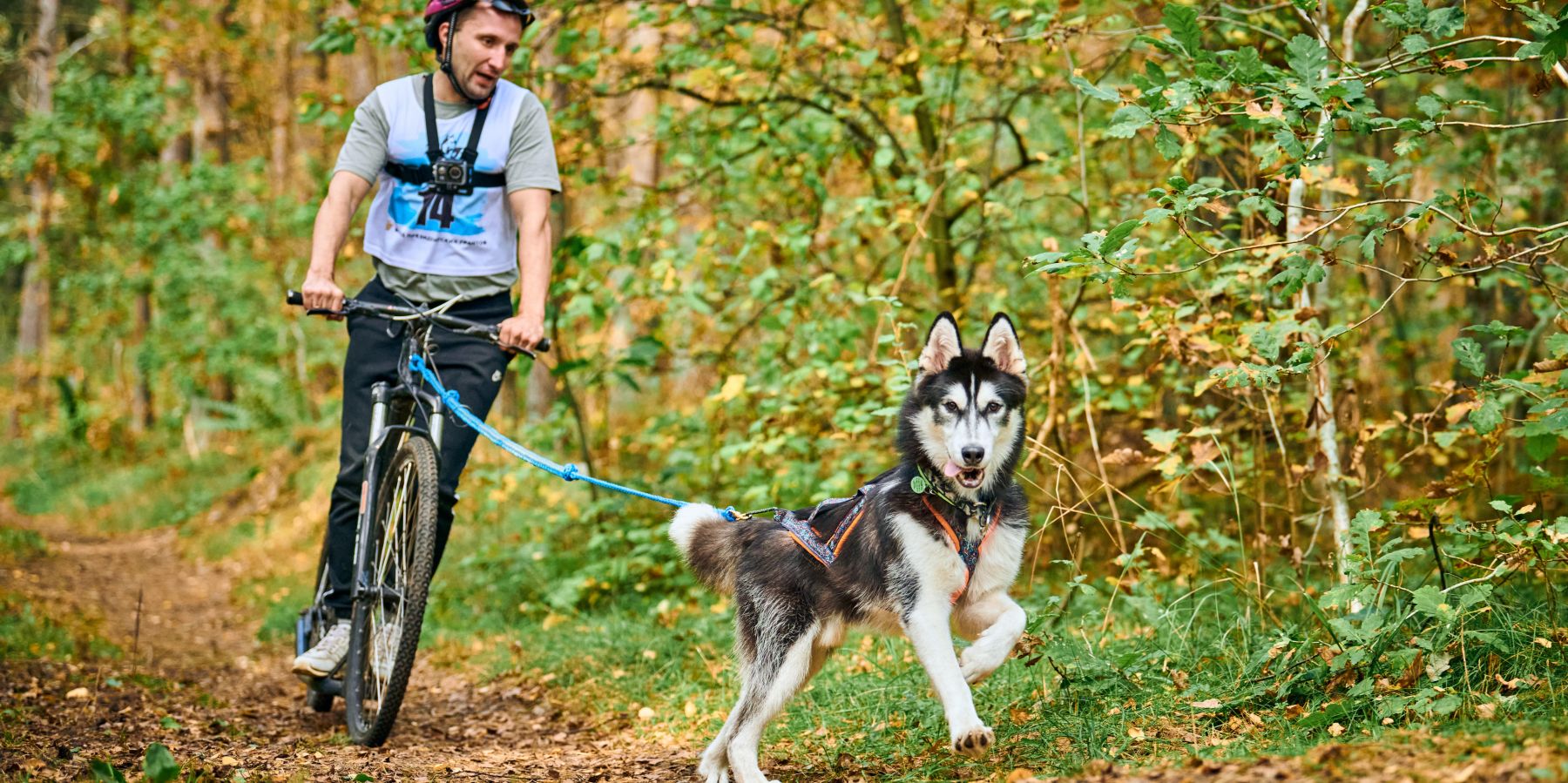Bikejoring is an exhilarating sport that combines the love of cycling with the joy of dog companionship. It is an adventure that requires both the cyclist and their canine friend to be in top physical condition and well-trained. This guide aims to provide aspiring bikejorers with essential training techniques and fitness tips to ensure a safe, enjoyable, and effective experience in this unique sport.
Understanding Bikejoring
Before diving into training, it's essential to understand what bikejoring entails. This sport involves a dog, or dogs, attached to a bicycle, pulling and running ahead while the cyclist pedals behind. It's a test of endurance, strength, and coordination, requiring mutual trust and understanding between the dog and the cyclist.
Fitness Preparation for the Cyclist
- Cardiovascular Fitness: Bikejoring demands good cardiovascular endurance. Engage in regular cycling, running, or other cardio exercises to build stamina.
- Strength Training: Incorporate full-body strength training into your routine, focusing on core strength for better balance and control on the bike.
- Flexibility: Regular stretching can improve flexibility, reducing the risk of injury.
Canine Fitness and Health
- Vet Check-Up: Ensure your dog is physically fit for bikejoring. A veterinary check-up is crucial to assess their health and readiness for such a strenuous activity.
- Building Endurance: Start with regular walks and gradually introduce running. Keep sessions short initially and slowly increase the duration.
- Strength Training: Play games that encourage jumping and running to build your dog’s muscle strength.
Training Techniques
- Obedience Training: Your dog must respond to basic commands such as “start,” “stop,” “left,” and “right.” This is crucial for navigating trails safely.
- Harness Training: Get your dog accustomed to wearing a bikejoring harness. Let them wear it during regular walks before attaching it to the bike.
- Desensitization to the Bike: Allow your dog to explore and sniff the bike. Walk with the bike and your dog to get them used to its presence.
Safety and Equipment
- Appropriate Gear: Use a suitable bikejoring harness, towline, and arm for the bike. Ensure the equipment is comfortable and safe for your dog.
- Protective Gear: Always wear a helmet, gloves, and other protective gear. Consider protective boots for your dog’s paws.
- Hydration and Nutrition: Both you and your dog need to stay hydrated and well-nourished. Bring water and snacks for longer rides.
Bikejoring Commands and Communication
- Directional Commands: Teach your dog left (haw) and right (gee) commands. Practice these during walks.
- Speed Control: Train your dog to understand “slow down” and “speed up” commands.
- Stopping and Starting: Ensure your dog responds reliably to “stop” and “go” commands.
Trail Etiquette and Awareness
- Trail Selection: Choose trails that are suitable for bikejoring. Avoid crowded or overly challenging paths.
- Respect Others: Always be mindful of other trail users. Keep your dog under control at all times.
- Environmental Awareness: Be aware of your surroundings, including potential wildlife encounters.
Building a Strong Bond
- Trust and Understanding: A strong bond between you and your dog is fundamental. Spend quality time together beyond training sessions.
- Positive Reinforcement: Use treats and praise to reinforce good behavior and successful training.
- Patience and Consistency: Be patient and consistent in your training approach. Progress may take time.
Conclusion
Bikejoring is not just a sport; it’s a journey of companionship and mutual growth. With the right training techniques, fitness preparation, and a strong bond between you and your dog, you can enjoy the thrilling world of bikejoring safely and effectively. Remember, the key to success in bikejoring lies in teamwork, communication, and a shared love for adventure.


